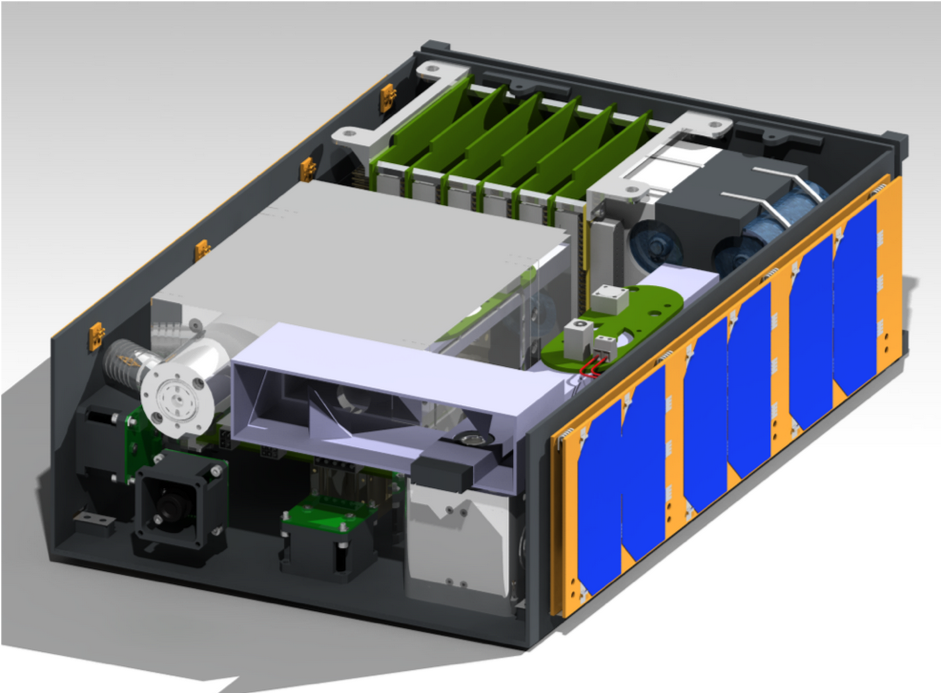Study of the action of solar radiations on organic matter

Beginning of the project : 2017
Planned launching : end of 2020
Solar radiation is responsible for most chemical evolutions in the solar system. These evolutions can be simulated in the laboratory to study molecules in gaseous phases, solid or even frozen mixtures at very low temperatures. However, it is difficult to correctly simulate the complexity of the space environment (in particular the UV light of the Sun and the particles coming from solar wind and cosmic rays) in which comets, asteroids or even other planets evolve.
The Space Campus is involved in a project that study the interaction of the space environment with organic matter: IR-COASTER. For this project conducted by the LISA lab, samples of organic matter and will be shipped and will stay for 12 months outside of the International Space Station. This instrument, built in collaboration with CNES, will also serve as a functional demonstrator and test before the launch of the associated Space Campus CubeSat Space Campus.
With the CubeSat IR-COASTER (not definitive name), samples of organic matter will directly be exposed to solar radiation in space. An infrared spectrometer embedded in this CubeSat will follow in real time the evolution of the chemistry of this organic material. The expected lifetime of IR-COASTER once in orbit is approximately 12 months.
Results obtained with samples left outside of the ISS and in the CubeSat will be combined to better understand how organic matter behave in space.
Organic Matter
Organic materials are carbon (C) and hydrogen-based (H) molecules which may also contain oxygen (O), nitrogen (N) and sometimes traces of phosphorus (P), sulfur (S) and other rarer elements.
Since carbon and hydrogen atoms can assemble easily to form complex structures, organic molecules are very diverse and have a wide variety of possible chemical reactions. As a result, most chemists and biologists believe that organic matter is essential to the appearance of life. Today, all living organisms on Earth, from blue whales to bacteria, are composed of organic matter.
Exobiology, also called astrochemistry, is an interdisciplinary science that aims to understand how life can form in the universe. For instance, exobiologists, are interested in understanding whether organic molecules found on asteroids or comets (such as glycine, an amino acid) could have contributed to the appearance of life on Earth, or even elsewhere. On the other hand, these scientists continue to investigate whether specific organic molecules of life as we know it could have been preserved on other planets such as Mars. Indeed, organic matter is abundant on the surface of the Earth but remains very rare in the rest of the universe.
Infra-Red (IR) Spectometry
Infrared spectrometry makes it possible to identify the composition of a sample by studying its electromagnetic spectrum in the infrared domain. When a chemical compound is irradiated with infrared photons, it will typically absorb some of these photons. By studying the absorption profile obtained, it is possible to determine which molecules are present in the sample. The IR spectrometer embedded in IR-COASTER projects is manufactured by Arcoptix and is the size of a can of sugar and weighs less than 2 kg.

